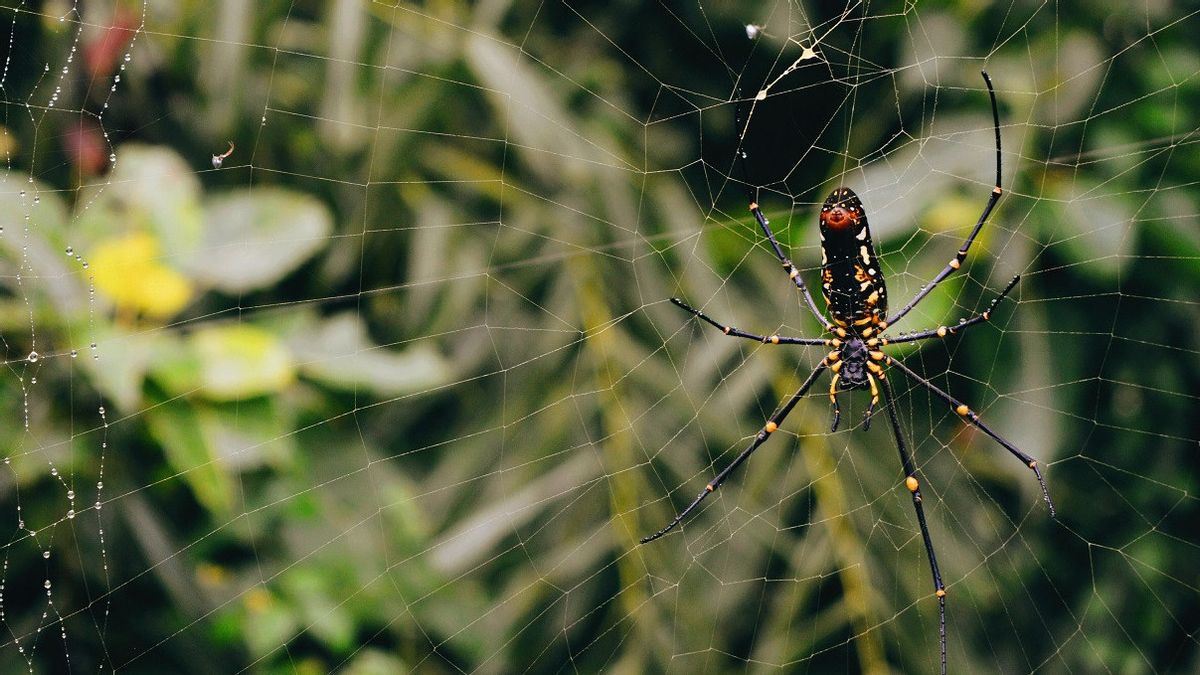JAKARTA - It is common knowledge that the spider is one of the animals with good building skills. However, what if the spider is also able to produce a musician-like tone?
This is the unique finding of a group of researchers from the Massachusetts Institute of Technology (MIT), United States. The researchers managed to detect spiders capable of producing music made from the fine silk of cobwebs.
Like the strings on a stringed instrument, the thickness and length of each strand of spider thread are said to be capable of producing a sound that is described as a harp.
Lead researcher Dr. Markus Buehler has long been interested in the relationship between music and science. He set out to investigate the extraction of rhythms and melodies from natural materials.
"Cobwebs could be a new source for musical inspiration that is very different from the typical human experience", said Buehler, cited from Euronews.
How do spiders do it? Called to have eight eyes, the spider is actually quite blind by human standards. Spiders see through touch and sound down to the smallest detail.
Buehler and his team worked with contemporary Argentine artist Tomás Saraceno to hear their net.
A natural spider web is scanned with a laser to capture a 2D cross section, which is reproduced in 3D using computer programming. The team assigned different sound frequencies to the web strands, taking notes on the structure of the web.

The team was able to connect different parts of the web with different frequencies, playing spider web music in live exhibitions around the world.
For more insight into the webbing process, they made some construction scans, changing the sound to convey the soundtrack of the stunning creation.
Scientists have long claimed that the silk that spider webs produce is five times stronger than steel. In fact, a Boeing 747 flight can be stopped with a single strand of spider web.
MIT's work with virtual reality plays an important role in the understanding of experiments on how to understand their structures. Scientists can enter the web, visually and audibly via a computer, to better understand how spiders build and inhabit their homes.
"The virtual reality environment is really interesting because your ears will pick up on structural features that you may see but are not immediately recognizable", says Buehler.
"By hearing and seeing it at the same time, you can really begin to understand the environment in which spiders live", he said.
The findings are reminiscent of work produced by the University of Oxford in 2014, in which they discovered the spider's built-in pitch sense allowed it to engage in the sophisticated tuning of its web.
"Spiders can actually pull out or reflect their silk threads, and can monitor the returning echoes so they can find objects", said lecturer Beth Mortimer at the time.
SEE ALSO:
Interesting communication implications have emerged from both studies, giving humans a way to better understand highly intelligent arachnids by speaking their own language.
"Now we're trying to generate synthetic signals that basically speak in spider language. If we expose them to certain rhythmic or vibrational patterns, can we influence what they do? And can we start communicating with them? That's a really interesting idea", concluded Buehler.
The English, Chinese, Japanese, Arabic, and French versions are automatically generated by the AI. So there may still be inaccuracies in translating, please always see Indonesian as our main language. (system supported by DigitalSiber.id)


















